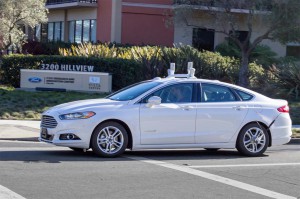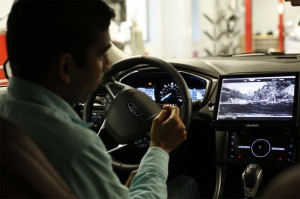Michigan motorists may soon be in for an unexpected sight: the state has taken steps to become the first in the country approving the testing of fully driverless vehicles on public roads.
Michigan, along with six other states, has already authorized automakers and suppliers to test hands-free vehicles, but the bill that has gotten its first nod from state legislators, would take things a big step further. Entirely driverless vehicles could potentially revolutionize transportation, and has already generated strong support from car-sharing services, such as Uber, while shipping companies have also expressed interest.
“We’re moving into the next century,” Republican Sen. Mike Kowall told fellow lawmakers considering a measure he is sponsoring. “With your assistance, we’re going to secure Michigan’s place … as the center of the universe for autonomous vehicle studies, research, development and manufacturing.”
The proposal passed the Michigan Senate unanimously on Tuesday and a similar proposal is now before the state House. If that measure is approved and the bills are reconciled the plan would go to GOP Gov. Rick Snyder who has already voiced his support.
Such a measure could help Michigan increase its role in the development of high-tech vehicle systems. Until now, California – and primarily the Silicon Valley – has served as the center of research into autonomous technology. But while the Golden State has crafted guidelines covering on-road research, regulators specifically barred public testing of vehicles that don’t have a driver onboard.
Until recently, most of the industry’s research had focused on hands-free technology, such as the autonomous Google prototypes that have clocked millions of miles of real-world testing. Current guidelines in Michigan, California, Nevada, North Dakota, Tennessee, Utah and Florida require that a licensed “operator” remain behind the wheel, ready to take over in the event of an emergency.

Ford recently began testing autonomous vehicle prototypes on public roads in Silicon Valley. That may spread to Michigan soon.
The general consensus has been that such hands-free models would begin reaching market sometime early in the coming decade. Until recently, most experts thought that fully driverless cars – possibly with no steering wheel or pedals for a human to operate – would need anywhere from five to 10 more years to develop.
But Google has been hoping to test such models within the next year or two. And Ford Motor Co. recently upended conventional wisdom when it announced a shift in its own focus, away from autonomous cars to fully driverless vehicles.
“We don’t think the path to true autonomy is through a step-by-step, incremental process,” Ford’s Chief Technology Officer Raj Nair told TheDetroitBureau.com during a telephone interview last month.
(For more on Ford’s driverless vehicle strategy, Click Here.)
There are several reasons why Ford and others in the industry have grown wary of any approach requiring human backup drivers. There’s the recent Florida crash of a Tesla Model S running in semi-autonomous Autopilot mode. Driver Joshua Brown, a 40-year-old former Navy SEAL, was killed when his car ran into a truck it somehow failed to recognize. Brown may have been distracted, watching a video, according to some reports, and unable to regain control.
There are other examples in the highly automated airline industry. In 2009, an Air France jetliner crashed into the ocean off Brazil when the crew failed to realize the autopilot system had malfunctioned. A Korean Air crash in San Francisco, two years ago, occurred when its autopilot system was inadvertently deactivated – and despite have a cockpit full of veteran pilots.
A number of studies have questioned whether humans can stay focused enough to take control in an emergency, should a vehicle’s autonomous control system fail. “You lose driver awareness. You lose the ability for a human to respond in a timely manner,” said Nair.
(Click Here for more on that autonomous vehicle project.)
As a center of the traditional auto industry, Michigan has been struggling to retain that role as the business goes through dynamic change. The University of Michigan recently established a testing center, dubbed MCity, designed to simulate both urban and highway conditions for smart car testing. An even larger facility is in development a dozen miles away on the old site of the B-24 bomber plant that served as part of the so-called Arsenal of Democracy during World War II.
Google has also announced plans to set up a testing center in Michigan. The tech giant, meanwhile, has inked a deal with Fiat Chrysler to install its autonomous vehicle technology on 100 new Chrysler Pacifica minivan prototypes.
California isn’t likely to be abandoned, experts said. It offers good roads and weather that make it easy to test advanced vehicles, and there is a huge supply of high-tech talent for the auto industry to draw upon. It also helps that a number of new entrants, including Google, Faraday Future, and possibly even Apple, are based there.
(Carmakers enter “gray zone” as they roll out semi-autonomous technology. Click Here for the full story.)
On the other hand, Michigan offers the rougher roads and weather extremes that autonomous and driverless vehicles will ultimately have to handle if they are to become practical in more than a few, select parts of the country.


